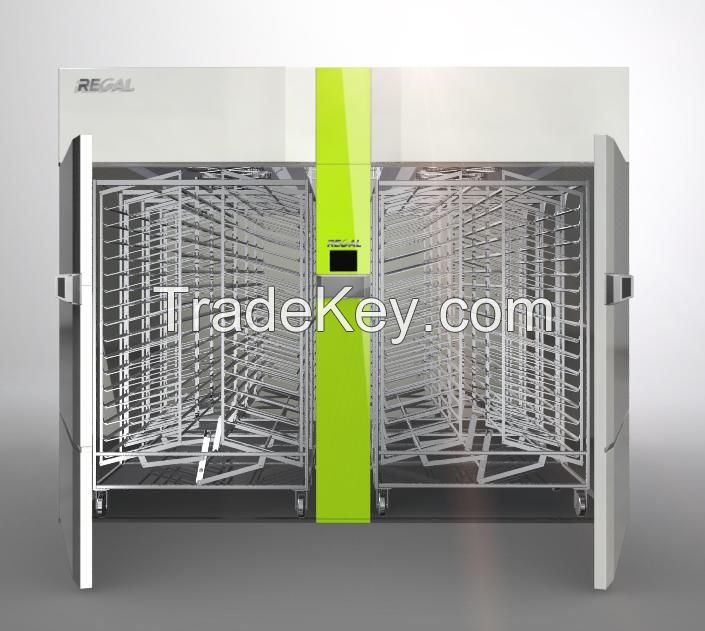Description
An improvement in
the rate of gain of broilers during the past *0 year has made the
incubation period a larger percentage of the overall growth period
for commercial poultry and has played a larger role in improving
growth efficiency.
Hatchery
managers have observed concomitant decreases in hatchability and
chick performance, whereas temperature profiles in the setters and
hatchers have not changed appreciably. Therefore, these decreases
in hatchability, first week livability, hatch time, and overall
chick quality have precipitated the need for a change in the way we
manage our hatcheries.
The use
of single-stage incubation has increased, because research has
shown this system more precisely meets the developmental demands of
the embryos.
Therefore, research
has focused on multi- and single-stage hatcheries to determine the
proper hatch conditions necessary to optimize embryonic
development, chick quality, and their effects on post hatch
performance. Studies have shown how increases in shell temperature,
independent of machine temperature, can result in increases in
embryonic mortality, decreased heart weight as a percentage of
chick weight, decreased yolk-free BW, and increased yolk weight.
Factors that have contributed to the increase in heat stress on
developing embryos include egg size, air flow, age of the embryo,
and breeder flock fertility. Other studies have shown that the
variation in chick performance can be explained by heat stress in
the hatchery.
Embryonic
temperature during incubation is now considered to be the most
important physical factor for successful commercial poultry
incubation.
Selection of the
optimum incubation temperature profile is important to achieve the
greatest hatchability. Field work has demonstrated that embryos
frequently become overheated during incubation, even when the
incubator is operating correctly.
The
difference between late embryonic temperature and incubator air
temperature is dependent upon thermal conductivity, which in turn
is mostly influenced by the air velocity over the eggs. Significant
production of metabolic heat from the embryo starts at around day
4. By day 9, embryo temperatures are greater than incubator air
temperature. Therefore, removal of heat from the embryo, rather
than just distribution of the air within the incubator, becomes a
critical factor influencing hatchability. The uniformity of the air
velocity within the incubator will depend on the ease at which the
air is able to pass over the surface of the egg shells to dissipate
heat. The number and size of shell pores and shell thickness are
factors that influence conductance, and the ability of the egg to
dissipate heat is directly related to egg size. As egg mass
increases, thermal conductance does not increase proportionally.
Therefore, larger eggs have greater difficulty dissipating
metabolic heat produced by the embryo. Physical conditions or
design of the incubator can also influence thermal conductivity.
For example, failure to properly fasten air-directing curtains in a
multistage incubator, incomplete turning, or design of egg trays
may result in air passing around the egg mass rather than through
them.
Overheated embryos
either in the setter or hatcher characteristically show reduced
yolk-free chick weight, decreased heart size, and heart as a
percentage of chick weight when compared with controls. Other
lesions observed in hatch residue analysis for overheated chickens,
turkeys, or both, have been red, bruised hocks; enlarged yolk
masses; unhealed navels; increased late dead embryos; malpositions
of late dead embryos with head over the top of the wing or with
head in the small end; and others.
Regal
Single-Stage incubator designoptimized embryonic
development, chick quality, and their effects on post hatch
performance. Regal single-stage incubator improved the temperature
environment around the egg shell, which resulted in decreasing in
embryonic mortality, decreasing heart weight as a percentage of
chick weight, decreasing yolk-free BW, and increasing the yolk
weight.
Regal
Single-Stage full line of product will be welcomed by many
customers because of their perfect stability of controlling system,
strong energy saving and the flexibility of operations, and raise
the subversive technical
innovation.
